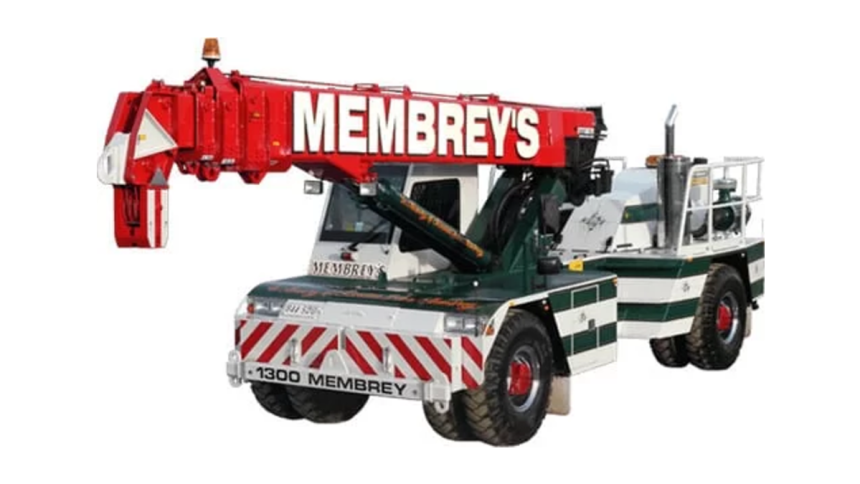Working in construction is all about getting the job done as efficiently and as safely as possible, within the time frame that’s been allocated to the project. To do this, contractors rely on the right tools and machinery for the specific job.
In many instances, this requires making use of the Franna crane hire Melbourne rental companies offer. What exactly is a Franna crane? How does it differ from a conventional crane and how will using one benefit your project?
The Low Down on All Things Franna
You don’t have to be a seasoned contractor to have heard the word “Franna” being mentioned concerning getting things done around job sites of all sizes. If you’re not sure what it is and why you need one, then this post is for you. Keep reading as our experts share the most significant factors you need to know about Franna cranes before you hire one.
1. Understanding What a Franna Crane is
Franna cranes have been around since the early 80s and are also known as pick-and-carry cranes or even taxi cranes. Not only can these cranes drive on public roads, but they can also lift a load and carry it to its intended destination.
Franna cranes have no stabilizer legs or outriggers which means it’s significantly quicker and easier to set them up. This also means that they don’t take up too much space on your job site. The fact that they were designed and manufactured in Australia is just a huge bonus to contractors who prefer to support local industry!
2. Know What a Franna Crane Can Do
One of the standout features that make Franna cranes so impressive is That they’re remarkably compact. This means that you can easily lift, move, and place downloads of up to 25 tons. Their high levels of manoeuvrability make them perfect alternatives to telehandlers and forklifts.
Additionally, Frannas use a minimum boom length to carry the load as close to the ground as possible, reducing the risk of materials dropping from heights. Since tag lines are attached to prevent load swing, the crane is sturdier and more stable.
3. A Few Options to Choose From
Another impressive aspect to consider is that most rental agencies have a variety of models on offer. This makes it super easy for you to get the right crane for the job. A few top options to consider include the following:
- Franna Mac25-Superlift: With a lifting capacity of 25 tons, this model is perfect for large-scale projects. Its versatility in narrow spaces makes it ideal for machinery relocation. Since the Superlift works with an existing Mac25 counterweight, the machine’s overall capacity can be increased by up to 30%.
- Franna AT40: As the name suggests, this model has a maximum capacity of 40 tons. Its articulate 3-axle design allows for a similar tuning circle to that of the Mac25.
- Franna AT22: With a load capacity of 22 tons, this machine also offers a radius of 22ft @ 1.4m. Combined with agility and a compact frame, this crane is super effective for carrying loads around on any job site.
- Franna 12T: If you’re looking for a small crane, then this model with its 12-ton capacity may be right up your alley. As a popular fixture on smaller job sites, this model also boasts a 1.53m working capacity radius which makes it a firm favourite to move lighter loads around or even between job sites.
4. Know Which Licence You Need
Despite being smaller and sturdier than traditional cranes, Frannas can only be operated if you have the necessary licence. This is because Frannas still fall into the mobile non-slewing category and also have a boom or a jib.
If you’re going to let your own employees operate the crane, you’ll need to ensure that they have gone through the appropriate training course from a Registered Training Organisation. Be sure to apply for the necessary High-Risk Work Licence.
Here’s a list of the crane licenses that you will need for various work classes:
- C2 high-risk work licence: 20-ton capacity (this applies to smaller Franna cranes)
- C6 high-risk work licence: 60-ton capacity (Larger Franna such as the AT40 and Mac25 will fall into this category)
- C1 high-risk work licence: 100-ton capacity
- C0 high-risk work licence: Capacity over 100 tons
5. Speed Limits on Local Roads
Having a crane that can be driven to and between job sites is a huge benefit to your project. This not only saves time but also reduces the need for external transport to move the crane. Keep in mind that your Franna crane will only be able to travel at a top speed of 75 km/h to be compliant with Australian road regulations.
Final Thoughts
Franna cranes have been designed with simplicity and functionality in mind. So, if you need to move materials around effectively, your project and your deadline will benefit from using a Franna crane. Why work harder when you can work smarter?
Lynn Martelli is an editor at Readability. She received her MFA in Creative Writing from Antioch University and has worked as an editor for over 10 years. Lynn has edited a wide variety of books, including fiction, non-fiction, memoirs, and more. In her free time, Lynn enjoys reading, writing, and spending time with her family and friends.















